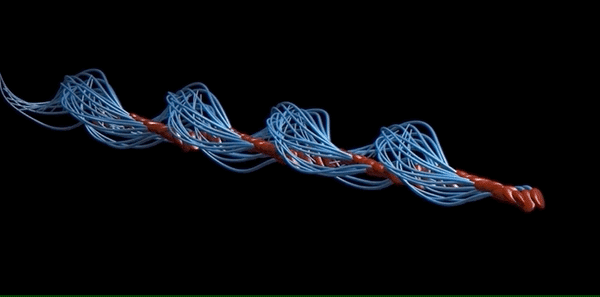Sperm moves so weirdly that science struggles to describe it.
Sperm flagella don’t swish side to side, they twirl in a strange – some would say chaotic – helix fashion but somehow still hit their target, a study finds.
Human sperm are usually depicted as moving like a tadpole in a pond, with their tails flicking left and right, propelling them forwards.
But researchers from the UK and Mexico have found that this 2D image is deceptive.
They placed sperm under a 3D microscope and tracked it with a camera that takes 55,000 pictures per second and discovered a surprising level of oddity in sperm movements.
Sperm flagella actually move in a lopsided corkscrew motion, which would have the sperm spinning in circles if it wasn’t for the extra rotation of the entire gamete.
It’s really hard to describe this kind of chaotic solution to forward motion; when scientists try, the English language starts to fail them.
The easiest-to-understand description was put forward by one of the researchers in The Conversation, who said that it’s a bit like the Earth spinning as it moves in a circle around the sun.
The paper published in Science Advances on 31 July uses slightly more technical (and incomprehensible) language…
Sperm moves in an “asymmetric traveling wave” that creates a “one-sided stroke, and a pulsating standing wave rotates the sperm to move equally on all sides”, the researchers reported.
“This shows that the sperm flagellum is asymmetrically controlled and anisotropically regularized by fast-signal transduction,” they concluded.
“This enables the sperm to swim forward.”
Crystal clear!
For everyone who is feeling dizzy just reading that… basically, we think that sperm move like this:
But actually they move like this:
If you see something stupid, say something stupid… send your sperm-inspired dance moves to felicity@medicalrepublic.com.au


